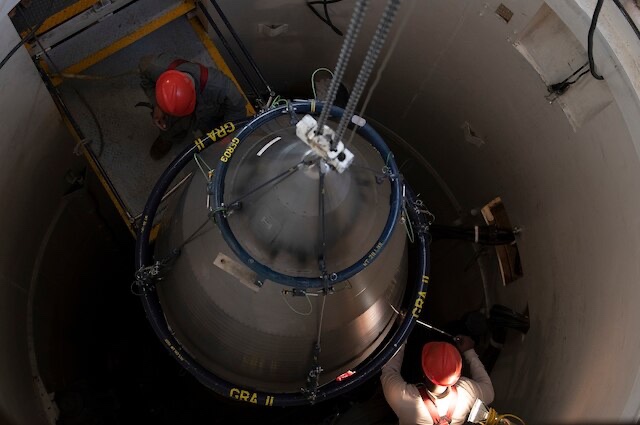
In a recent Defense News commentary, we described how important it is to reinforce nuclear deterrence, a policy we have relied upon for security for decades. While many readers may understand that deterrence means avoiding war by maintaining our military strength, it is less well understood that deterrence relies heavily on the perception of our strength and intentions by a potential adversary.
Deterrence is not a static policy that can be instituted and remain effective; it needs to be maintained and updated periodically to cope with evolving conditions.
Nuclear deterrence was developed in the late 1940s between America and the Soviet Union, although at the time both were hastily building up stockpiles of warheads. The initial simple theory developed into the concept of mutual assured destruction. For the concept to be effective, each side had to be convinced that not only did its adversary have effective weapons, coupled with the means of delivery, but also the determination to use them.
Thus, for deterrence to be effective it has to be implanted in an opponent’s planning, discouraging that adversary from military action.
In an attempt to minimize nuclear proliferation, successive American administrations dissuaded allies from developing their own capabilities by offering them extended deterrence. This led eventually to the deployment of American nuclear forces in Europe and the Pacific, in part to demonstrate the U.S. commitment, not only to their allies but to potential opponents.
Changes in U.S. policy — such as the introduction of the Strategic Defense Initiative by President Ronald Reagan in 1983, and later the effort by President Barack Obama in 2009 to adopt the goal of a world without nuclear weapons — opened real questions about extended deterrence.
Allies concerned that the Strategic Defense Initiative could lead to America being protected by an effective defense sought an expansion of the criteria for any strategic defense to include allied territory and protection of deployed forces. Similarly, the Obama declaration, which suggested America might no longer rely on an immediate nuclear response to an attack, alarmed allies. This topic was raised again in November 2020 when the German defense minister acknowledged that Germany and Europe cannot protect themselves without America’s nuclear and conventional capabilities — an acknowledgment disputed by President Emmanuel Macron of France and NATO Secretary General Jens Stoltenberg, preferring to see Europe less dependent on the United States.
Since the fall of the Soviet Union, proliferation of nuclear capabilities has increased. The outdated term “third world” can no longer be equated with third rate. The acquisition of nuclear warheads by terrorists seemed unthinkable in 1968 when the Treaty on the Non-Proliferation of Nuclear Weapons was signed. Now, in our current proliferated world, such confidence is much reduced, particularly since Pakistan became a nuclear nation. Pakistan have transmitted nuclear capabilities to others like Iran, who in turn have probably assisted North Korea.
Thus, clearly we still need to rely on deterrence while reinforcing security by the addition of an effective defense, as outlined in the referenced commentary. The world is now multipolar, and we have to explore new ways of maintaining our security in this nuclear-proliferated world. In the interim, we have to rely for the foreseeable future on our limited deterrence and ballistic missile defense capabilities.
In our opinion, deterrence remains limited because we have relied too long on systems that have not been modified nor upgraded since the 1980s. America regularly conducted underground tests to confirm our nuclear stockpile remained fully operational. The last test was in 1992, and since then the stockpile has been monitored under a life-extension program. Deteriorated components are replaced with remanufactured items — a change that potential opponents, on whom we rely upon to remain concerned at our overwhelming strength, will have noted.
The problem we have with the life-extension program is that most of the scientists and engineers who developed and produced the weapons in the stockpile have retired or left. With deteriorating facilities and no significant ongoing program to replace their expertise, unintended consequences can be introduced by replacing components.
Nuclear warheads contain both nuclear and non-nuclear components. Most of the latter were manufactured by contractor companies that may no longer exist, or they are no longer using the same facilities and procedures. The operation of the warhead remains critically dependent on the properties of these components, and no computer simulation program can assure this requirement is met.
Transparency of trials remains an important component of deterrence: We become less secure by not assuring potential opponents that we have the means to inflict devastating destruction to them in response to an attack. Sadly, our lack of investment in the development and production of new warheads reduces our level of security.
Stanley Orman is the founding director general of U.K. participation in the Strategic Defense Initiative program. Retired U.S. Army Maj. Gen. Eugene Fox served as deputy director of the Strategic Defense Initiative Organization.
No comments:
Post a Comment